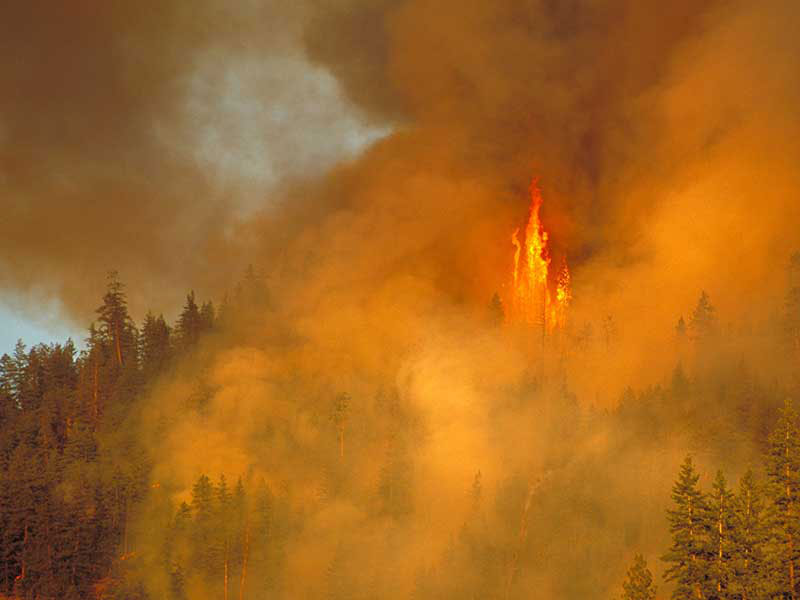
Simply put, the summer of 2021 will go down in British Columbia’s history as the season in which hell came calling and refused to leave. Record-breaking temperatures led to unprecedented forest fires that created widespread economic, social and emotional havoc.
By mid-August, B.C. had endured three serious heat waves. The first, during early July, was directly related to an estimated 570 deaths in Greater Vancouver alone. Shortly before, the village of Lytton (pop. 300), 150 kilometres northeast of Vancouver, set an all-time Canadian heat record of 49.6°C.
That was followed quickly by a wildfire spreading at unbelievable speed and consuming 90% of Lytton, leaving two dead and many more homeless. Since then, thousands of hectares of B.C. forests have been destroyed along with homes, farms and businesses.
Tallying the economic costs of B.C.’s burning is ongoing, but the damage is unbelievably extensive. The obvious direct costs, such as fighting the wildfires, will be bad enough. The allocated budget for fiscal 2021-22 of $136 million has already been blown away and could surpass the $600 million spent during each of the previous peak years (2017 and 2018).
When costs exceed the wildfire budget allocation, the B.C. Wildfire Service can spend additional funds. This year the contingency is a record $1 billion, as the number and size of fires are already more than double the 10-year average.
Indirect wildfire costs are climbing as well. Shipments of goods through the Port of Vancouver, Canada’s primary trade gateway to Asia, have seen delays of both containers and bulk commodities due to railway tracks damaged during the Lytton fire.
Rail shipping also has slowed due to federal fire-risk mitigation requirements, which include speed restrictions and increased inspections. Major highway links also have closed periodically.
The wildfires have generated sensational news clips, dramatic photos and front-page news stories worldwide, all of which suggest that millions of tourists shouldn’t come to B.C. This leaves the province’s tourism sector — resort owners, restaurateurs, wineries, etc. — with a monumental selling job to counter such negative publicity.
Of course, the province’s lumber industry is another victim. B.C.-based forestry companies, which are critical in supporting many small communities, are coming off a period of record-high lumber prices and profits. But they’re now entering a period when regions such as the B.C. Interior are becoming the highest-cost lumbering jurisdiction in North America. For an all-important export industry such as forestry, that’s bad news. Wildfires only make it worse.
All of this is happening against a backdrop of a B.C. government that recently reported a record $5.5-billion deficit for fiscal 2020-21 — even though, relatively speaking, B.C. remains one of Canada’s strongest provincial economic engines. Economists, however, predict more annual B.C. deficits are coming.
In fact, the summer wildfire fiasco is now seen as the second punch in a one-two pounding to B.C.’s economic belly, the first being the high costs of Covid-19.
So where do we go from here?
Forestry experts warn that if we don’t change our management policies quickly, devastating wildfire seasons like 2021 will become “commonplace” by 2050. They also say B.C. must fight these fires before they begin by doing controlled burns and taking other remediation methods in wetter winter months to reduce potential wildfire fuel before it ignites.
Uncooperative co-executor passed over by court
Case illustrates the risks of appointing multiple executors